DVB-T Aerials Guide
Range
The range of an aerial refers to its ability to receive signals from a specific distance or geographic area. Different aerials have varying ranges, and it is important to select one that suits your needs.
In terms of range, there are several types of DVB-T aerials available in the market. Entry-level aerials such as the One For All SV9365 offer a range of up to 9 miles, making them suitable for urban environments where signals tend to be strong. For those living in suburban areas or slightly out of range from broadcast towers, mid-range aerials like the SLx 27824RG with a range of 15 miles might be more suitable. If you reside in a sparsely populated rural area, long-range aerials such as the Labgear RXG34LTE with a range of 28 miles can provide excellent signal reception in challenging conditions. Keep in mind that these suggested ranges might vary depending on local conditions and obstructions.
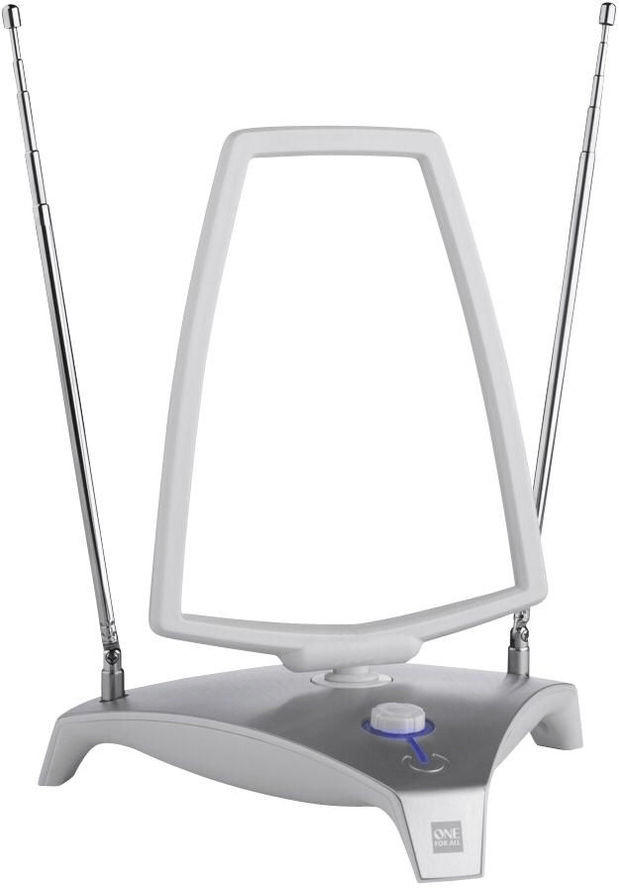

Signal strength
When choosing a DVB-T aerial, signal strength is one of the key factors to consider. The strength of the signal you receive depends on various factors such as the distance to the transmitting tower, obstacles like buildings or hills, and the quality of the aerial itself. To ensure a reliable reception, it is essential to select an aerial that offers excellent signal strength.
One option to consider is the 1byone Digital TV Aerial. This aerial is designed to receive both UHF and VHF signals and boasts a maximum gain of 28dB, ensuring a strong and steady signal. Another reliable choice is the August DTA240 High Gain Freeview TV Aerial. This aerial features a built-in amplifier with an adjustable gain of up to 36dB, allowing you to maximize the signal strength based on your specific location. Additionally, the SLx Gold Magic Eye Link is a popular option for those who require a TV aerial with a booster for boosted signal strength and improved reception in fringe areas.
By considering aerials such as the 1byone Digital TV Aerial, August DTA240 High Gain Freeview TV Aerial, and SLx Gold Magic Eye Link, users can prioritize enhanced signal strength, allowing them to enjoy optimal reception and a seamless viewing experience.

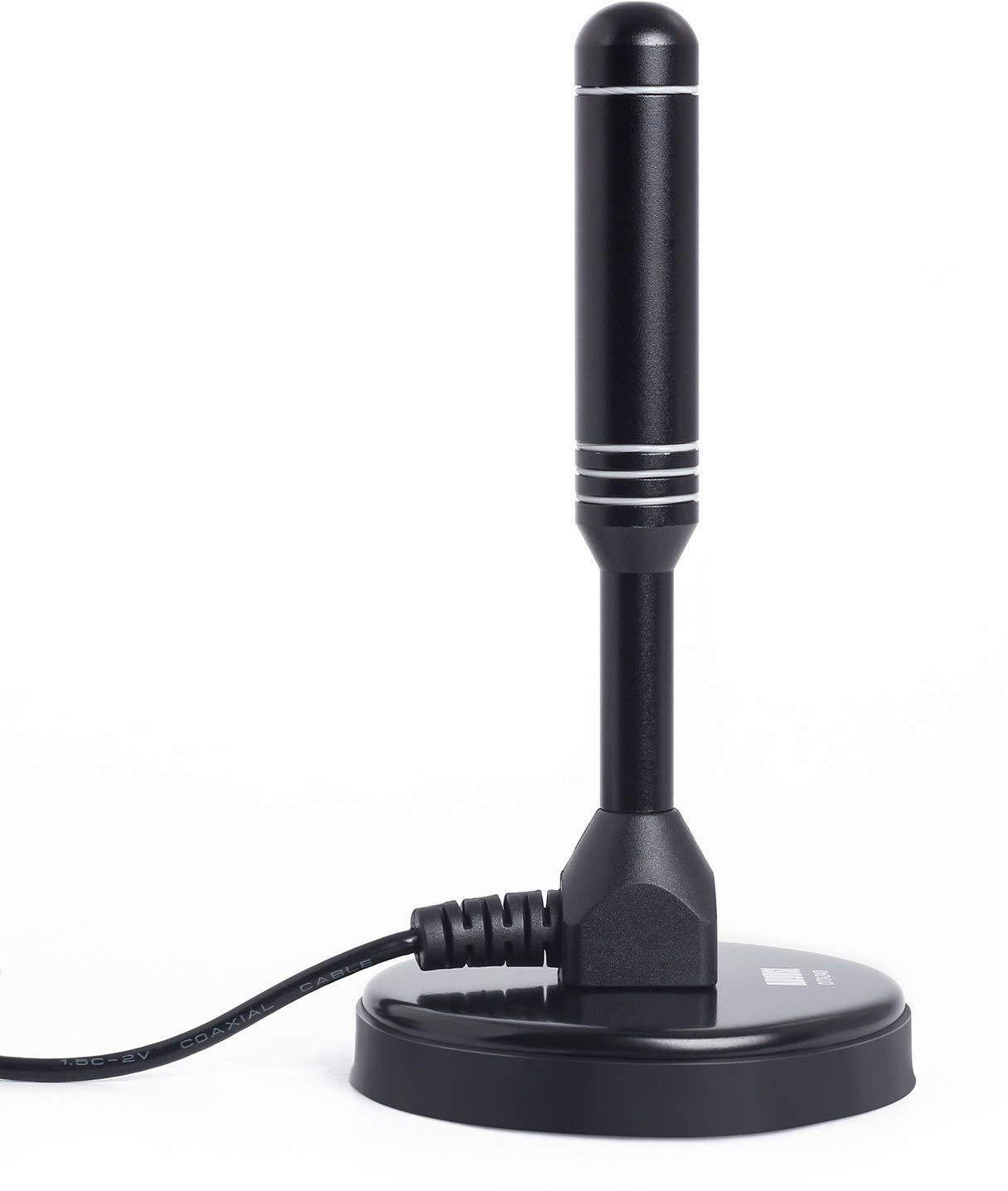
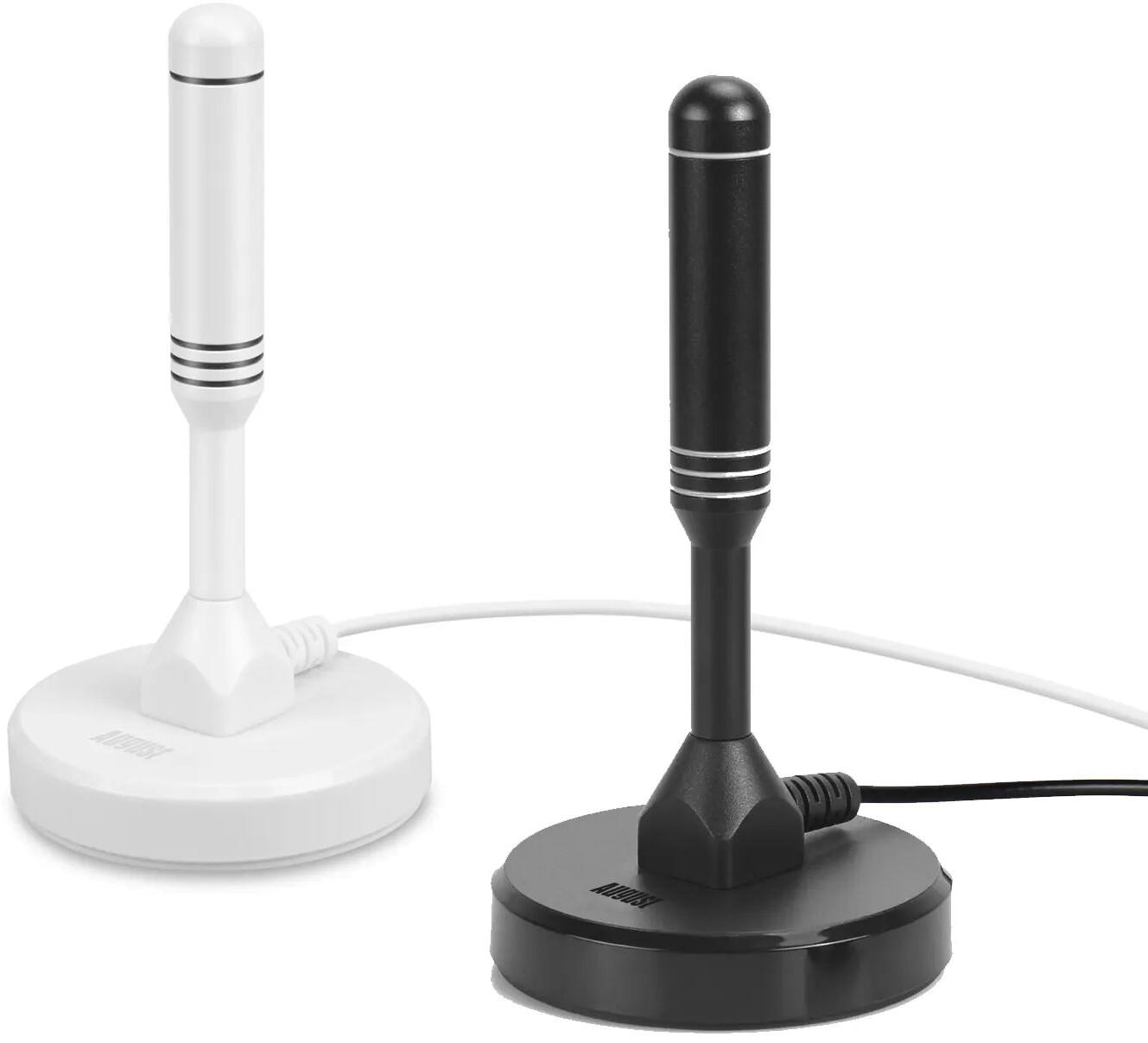
UHF/VHF compatibility
UHF (Ultra High Frequency) and VHF (Very High Frequency) are two separate frequency bands used for broadcasting TV signals. While UHF is commonly used for digital TV and provides better signal quality, some channels may still be broadcast in VHF.
For users living in areas with a mix of UHF and VHF signals, it is crucial to select an aerial that offers both UHF and VHF compatibility to ensure optimal reception. One such product that caters to this need is the 'Indoor Amplified HDTV Antenna', which can receive VHF/UHF signals within a range of 50 miles. Another option is the 'Outdoor TV Aerial Amplifier', designed to capture a wide frequency range, including both UHF and VHF signals, providing excellent reception for television channels broadcasted in these bands.
Some aerials specifically target UHF compatibility, like the 'UHF Digital TV Antenna', which can receive signals in the UHF band with an impressive gain of 16.7 dB. Conversely, if the focus is on VHF compatibility, 'VHF Broadcast TV Antenna' is a great choice as it adjusts its dipole orientation to capture signals in the VHF frequency range, ensuring better reception for those channels. It is important to research and select an aerial that aligns with the specific UHF/VHF requirements in your area for the best possible television reception.
Frequency range
The frequency range determines the type of television signals your aerial can pick up. It is important to choose an aerial that covers the right range to ensure optimal signal reception. For example, the 'One For All SV9305' is an indoor aerial that has a frequency range of 174-230 MHz and 470-790 MHz, making it suitable for both VHF and UHF signals. Another option to consider is the 'August DTA206' which covers a frequency range of 47-862 MHz, allowing it to receive a wide range of signals. Some aerials may also be optimized for specific frequencies, such as the '8-Element Bowtie' antennae which excel at receiving high-frequency UHF channels. When choosing a DVB-T aerial, it is important to consider the frequency range that your area's television signals operate within to ensure compatibility and optimal reception.
Multipath resistance
Multipath signals occur when the original signal reflects off nearby objects such as buildings, trees, or terrain, causing interference and reducing image and sound quality. To overcome this issue, it is advisable to opt for aerials that feature high multipath resistance. Aerials like the TVFox Antenna or the 1byone Amplified Outdoor Antenna have exceptional multipath resistance due to their advanced technology. These antennas employ a range of features, such as built-in Low Noise Amplifiers (LNA) and high-gain reception, to ensure clear and uninterrupted reception, even in areas with significant multipath reflections. By investing in an Antenna with strong multipath resistance, viewers can enjoy optimum performance and a superior viewing experience.


Noise figure
The Noise figure represents the amount of noise added to the received signal by the aerial itself. A lower noise figure indicates better performance in reducing interference and optimizing signal reception.
Some top-notch DVB-T aerials known for their low noise figures include the Televes DAT Boss LR Budget Aerial with a noise figure of just 1dB, ensuring excellent signal quality even under challenging reception conditions. Another remarkable option is the Labgear PROLXRG+ Filters Mk2 Aerial, boasting an impressive noise figure of 0.7dB for exceptional sensitivity without introducing excessive noise to the received signal. For those seeking a cost-effective yet highly efficient solution, the SLx 27823BMR Aerial comes with a competitive noise figure of only 0.5dB, offering reliable reception performance.
Different groups or segments in the market may categorize DVB-T aerials based on their noise figures. This can include budget-friendly options with noise figures below 1.5dB, mid-range aerials with noise figures ranging from 0.5dB to 1dB, and premium aerials with noise figures below 0.5dB.
Amplification level
This refers to the amount of signal boost the aerial provides, which is crucial for ensuring a clear and stable reception. The amplification level is typically measured in decibels (dB), with higher values indicating a stronger signal boost.
One example of a DVB-T aerial with a high amplification level is the Philex 27741HS Passive High Gain Aerial, boasting an impressive 52 dB amplification. Another option is the Labgear DigiPro Amplified Tri-Boom Aerial, which offers a 45 dB amplification level. For those looking for a more budget-friendly option, the SLx 27774RG Digirange Indoor Aerial provides a modest 36 dB amplification level. These products all vary in terms of their amplification capabilities and can cater to different requirements depending on the desired signal strength.
Gain control
One important factor to consider when choosing a DVB-T aerial is gain control. Gain refers to the amount of signal amplification that the aerial provides. A higher gain can improve reception in areas with weak signals or long distances from broadcasting towers. However, it's important to note that too much gain can lead to signal overload and cause issues like pixilation or loss of picture quality.
When considering gain control in DVB-T aerials, one product that stands out is the Antennas Direct ClearStream 2MAX Amplified Indoor/Outdoor Aerial. With a gain of up to 60 miles, this aerial is suitable for both indoor and outdoor use, making it a versatile choice for different environments. Another product worth considering is the Winegard FlatWave Amped FL5500A Amplified Digital Indoor HD Aerial. With a 50-mile range, it provides powerful signal reception and is optimized for digital TV signals. For those looking for an affordable option, the 1byone Amplified Long Range Digital Aerial is a great choice, offering a gain of up to 80 miles while maintaining a budget-friendly price.
Polarization
Polarization refers to the orientation of the electric field in the electromagnetic wave. In the case of DVB-T aerials, the two common types of polarization are horizontal and vertical.
Some high-quality DVB-T aerials that offer horizontal polarization include the Clearstream 2MAX Multi-Director UHF/VHF HDTV Outdoor Antenna, which is capable of receiving signals from multiple directions and has an impressive range of up to 60 miles. Another notable option is the RCA ANT751R Compact Outdoor Yagi HDTV Antenna, which boasts superior reception and durability.
Vertical polarization options include the 1byone High Gain Low Noise Amplifier TV Antenna, which features a built-in amplifier for enhanced signal strength and excellent performance. Another reliable choice is the Channel Master CM-4228HD High VHF, UHF and HDTV Terrestrial Antenna, known for its ability to capture both VHF and UHF frequencies efficiently.
When considering polarization in DVB-T aerials, it is crucial to choose a product that matches the polarization requirements of the broadcasting stations in your area.
Installation method
There are two main types of installation methods to choose from: indoor and outdoor. Indoor aerials, such as the Mohu Leaf Metro Indoor HDTV Antenna and the 1byone Window Antenna, are easy to set up and install. These aerials can be positioned near a window or placed on a wall, offering a convenient solution for those living in apartments or houses where outdoor installation isn't feasible.
On the other hand, outdoor aerials provide superior signal reception and range. They typically require additional components like mounting brackets and coaxial cables for installation. Examples of outdoor aerials include the Antop Smartpass Amplified Outdoor/Indoor/Attic Antenna and the Winegard Platinum Series HD7694P Long Range Outdoor TV Antenna. These aerials are designed to withstand various weather conditions and provide better signal quality, making them ideal for areas with weak reception or distant broadcast towers. Overall, choosing between indoor and outdoor installation methods depends on the specific requirements and circumstances of your location.
Size
The size of the aerial can significantly affect its performance in receiving digital TV signals. The larger the aerial, the higher the gain of the signal it can receive, resulting in a better quality picture and sound. An example of a high-performance, large-sized DVB-T aerial is the 1byone Indoor/Outdoor TV Antenna. This antenna has a range of up to 120 miles and a built-in amplifier, offering enhanced reception capabilities. Another option is the PINGO Outdoor Digital TV Aerial. This aerial features a large, sleek design capable of receiving signals from up to 100 miles away. Both of these products provide excellent signal reception due to their sizable design.


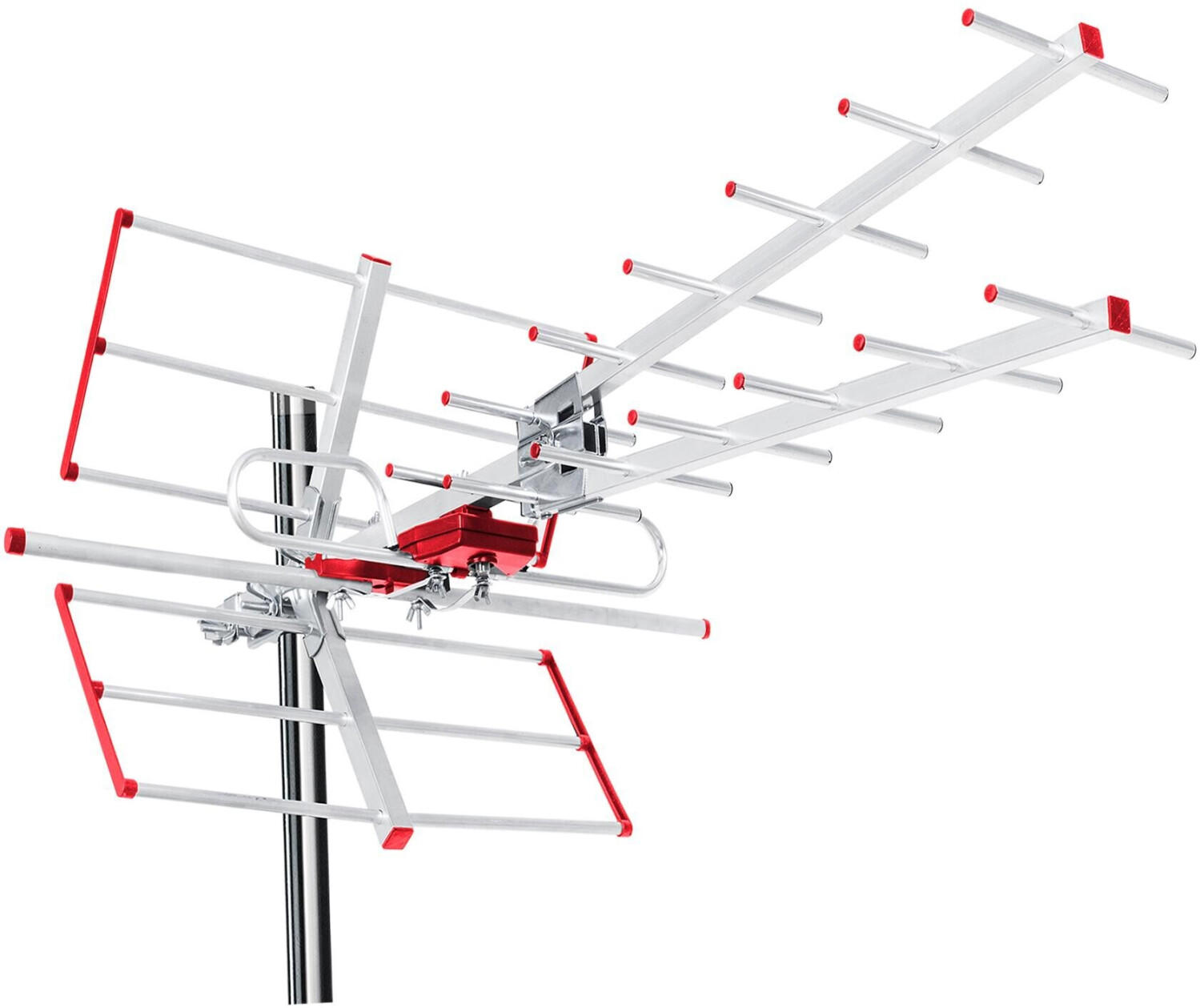

Weight
Weight plays a crucial role in the stability and durability of the aerial, ensuring it can withstand different weather conditions without compromising the signal quality. A lightweight aerial is desirable as it can be easily installed and maneuvered, making it convenient for mounting on various surfaces. One example of a lightweight DVB-T aerial is the 1byone Digital Amplified Outdoor HDTV Antenna. Weighing just 2.6 pounds, this aerial provides an improved signal reception with a 150-mile range and supports full HD 1080p, ensuring crystal-clear picture quality. The ViewTV Outdoor Amplified Digital HDTV Antenna is another option in this category with a weighing of 3.82 pounds and features a 150-mile range, dual TV outputs, and an infrared remote control. Both of these options offer lightweight yet robust construction to ensure optimal performance.
Durability
Look for aerials made from high-quality materials such as sturdy aluminum. The 1byone Amplified Outdoor TV Aerial boasts a durable, weather-resistant construction that ensures it can withstand various environmental conditions. With its UV coating, it remains fade-resistant even when exposed to direct sunlight. Another option is the Philex Tri-Ax TV Aerial, known for its durable design that withstands harsh weather conditions. Its element fittings are also secured using strong screws for added durability. Overall, these aerials, known for their durability, provide long-lasting performance and offer peace of mind.
Design
This refers to the physical appearance and build of the product, which in turn affects its performance. Some design features to consider include the type of aerial (e.g., indoor, outdoor, or portable), its size, and the materials used in its construction.
One popular group of DVB-T aerials are the indoor models, which are compact and designed to be placed indoors on a table, shelf, or window. The 1byone TV Aerial is an excellent example of an indoor aerial that boasts an ultra-thin design and a durable construction with an amplification range of up to 50 miles. For those looking for outdoor aerials, the SLx Outdoor TV Aerial is highly recommended. This model features a robust design, resistant to extreme weather conditions, and can capture signals from up to 15 miles away. Additionally, there are portable options such as the August DTA225 Portable TV Aerial which has a foldable design, perfect for those who frequently travel and want to enjoy digital TV signals on the go.
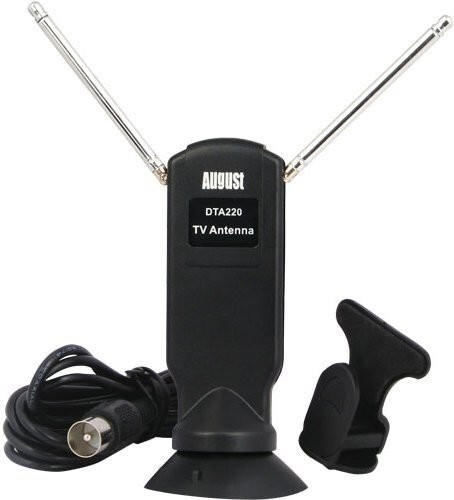
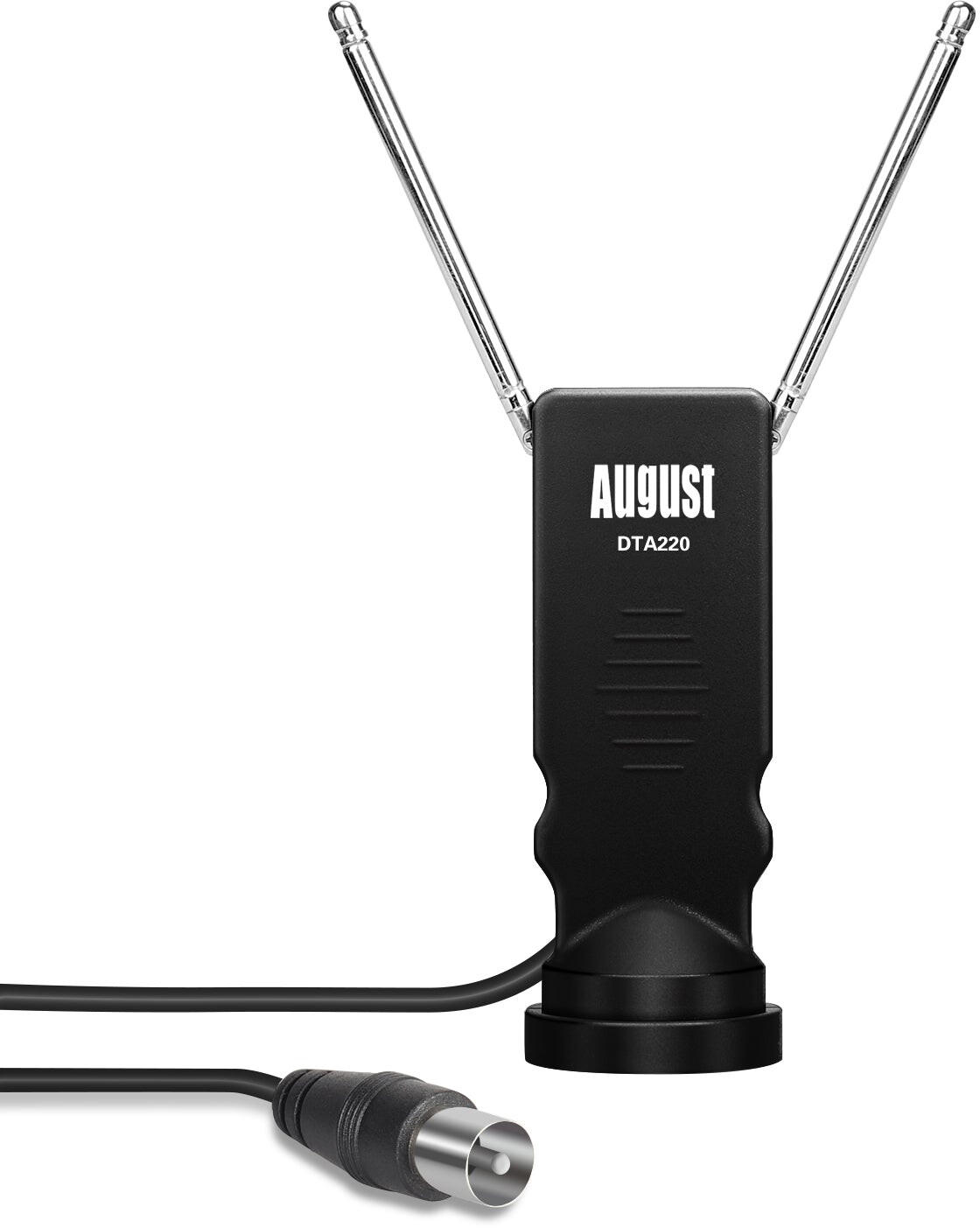
Color
The color of the antenna can impact its performance and suitability for your specific setting. Aerials that feature a white or light-colored finish are particularly beneficial for urban areas, as they blend in well with the surroundings and are less likely to draw attention. Additionally, a light-colored aerial can help minimize heat absorption, leading to better overall performance.
One example of a DVB-T aerial with a white finish is the HD Freeview TV Aerial which offers a frequency range from 474 to 790 MHz and an gain value of 25dBi. Weighing just 400 grams, it is compact and designed to be easily installed on a wall or a roof. Another option is the Labgear LAB450T Flat 4G, a lightweight aerial specifically designed to provide great reception in areas affected by 4G interference. This aerial is white, ensuring its suitability for urban environments and comes with a built-in low noise amplifier to enhance signal strength.
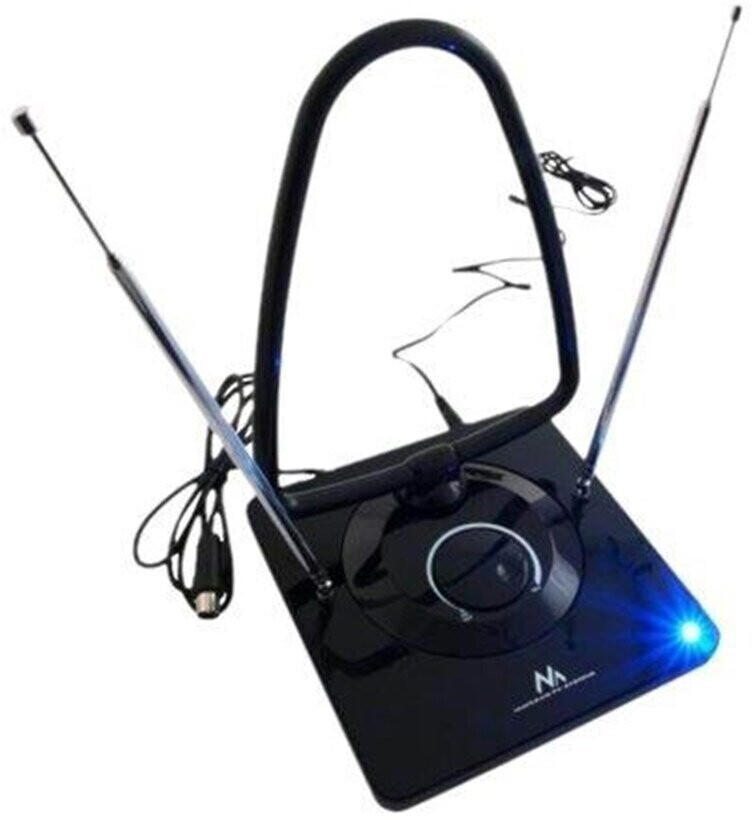
Cable length
The cable length refers to the distance between the aerial and the television or set-top box. It is crucial to select the right cable length to ensure optimal signal strength and minimize signal loss. Different cable lengths are available in the market, ranging from 5 meters to 30 meters.
For shorter cable runs (up to 10 meters), the August DTA240 High Gain TV Aerial is an excellent choice. With a cable length of 3 meters, this aerial is suitable for those who have their television or set-top box located in close proximity to the aerial source. It is equipped with an amplifier to improve signal reception, and its compact design allows for easy installation.



For longer cable runs (between 10 to 30 meters), the One For All SV9455 Amplified Outdoor TV Aerial is a recommended option. This aerial has a substantial cable length of 20 meters, making it suitable for setups where the television or set-top box is placed at a further distance from the aerial source. It also features an adjustable amplifier to maximize signal strength, and its weatherproof design ensures durability and resistance to outdoor conditions.
Connector type
Different aerials come with various connector types that determine their compatibility with the television or set-top box. The most commonly used connector types include the COAXIAL connector with an impedance of 75 ohms and the PAL connector. If you're looking for an aerial with a coaxial connector, the 1byone Outdoor HDTV Antenna with Coax Cable would be a great choice. It features a standard RG6 coaxial cable, ensuring seamless connectivity with any DVB-T device. On the other hand, for those seeking an aerial with a PAL connector, the Labgear High Gain Outdoor TV Aerial with PAL Connector is worth considering. It comes equipped with a PAL connector, offering clear and reliable signal reception.
Mounting options
Different aerials come with different mounting options to suit various installation requirements. Some common mounting options include wall mounting, roof mounting, and loft mounting. For wall mounting, aerials like the 1byone Indoor TV Aerial or the August Digital Indoor Aerial would be suitable options. These aerials offer easy installation and can be mounted on the wall using the included screws or adhesive tape.
For roof mounting, aerials like the Outdoor TV Aerial by Philex or the SLX Amplified Outdoor TV Aerial are great choices. These aerials are designed with weatherproof materials and come with the necessary brackets for secure mounting on the roof. Additionally, for loft mounting, the Vision Plus Digital Loft Aerial or the One For All Indoor Loft Aerial are recommended options. These aerials are compact in size, making them ideal for installation in tight spaces like lofts or attics. Regardless of your mounting preference, make sure to review the specifications and features of each aerial to ensure it meets your specific need.
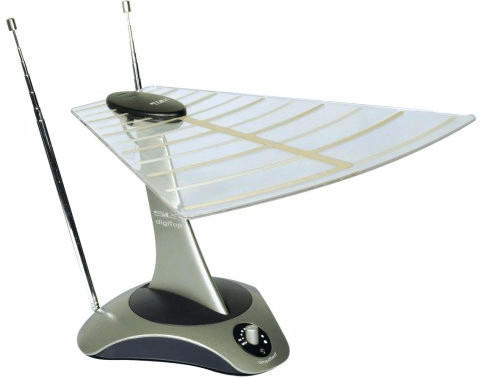

Indoor/outdoor use
Indoor aerials are suitable for areas with strong signal reception or if you live near a transmitter. They are compact and easy to install, making them perfect for apartments or areas with restricted mounting options. Some recommended indoor aerials include the 1byone High Gain Low Noise HDTV Antenna which has a multi-directional reception with a range of up to 60 miles, and the Mohu Leaf Metro TV Antenna which is paper-thin and provides an amplified signal.
On the other hand, outdoor aerials are designed for areas with weak signal reception or if you are far away from your nearest transmitter. They are larger in size and require mounting on a pole or roof. Outdoor aerials often provide better reception and can be optimized with motorized features. Examples of outdoor aerials include the Antop UFO Amplified Outdoor TV Antenna which offers 360-degree omni-directional reception and supports multiple TVs, and the Channel Master CM-3020 Long Range VHF/UHF/FM TV Antenna which features a built-in amplifier and has a range of up to 100 miles.
Weatherproof design
This is particularly crucial for those who live in areas with extreme weather conditions, such as heavy rain or strong winds. Look for aerials that are specifically designed to withstand harsh weather, with features like waterproof construction and UV resistance. One such option is the Eightwood DVB-T2 Antenna, which is made with a weatherproof ABS material and has an IP65 waterproof rating, ensuring its durability in different weather conditions. Another example is the 1byone Outdoor TV Antenna which features a sleek, weatherproof design with a durable plastic casing for protection against rain and UV rays.
Group 1: Weatherproof indoor antennas
Group 2: Weatherproof outdoor antennas

It is important to note that while a weatherproof design is crucial, other factors like signal strength and antenna placement should also be considered for optimal viewing experience.
Easy setup
Look for aerials that offer simple installation procedures, with easy-to-follow instructions, and require minimum assembly or adjustments. The GE 33692 Pro Outdoor Yagi TV Antenna is a great option for easy setup, as it comes preassembled and can be easily mounted outdoors. It features snap-lock elements, making the installation process a breeze, and has a “EZ-AB Switch” that allows for quick tuning adjustment. Another convenient choice is the 1byone Amplified Outdoor Digital HDTV Antenna. This antenna also comes preassembled and offers a tool-free installation process. It has a unique mounting arm design that allows for easy antenna direction adjustment, ensuring optimal signal reception.
Energy efficiency
Opting for an energy-efficient aerial not only helps to lower your energy bills but also reduces your carbon footprint. One excellent example of an energy-efficient DVB-T aerial is the Log Periodic Digital Aerial 4G/LTE Optimized from Philex. This aerial is carefully designed to minimize power consumption while delivering excellent reception. It features a 300/72Ω impedance and a 6-12dBi gain, allowing for reliable signal reception and transmission. Other energy-efficient options include the HD Digital TV Aerial from MAXVIEW, which boasts low power consumption along with a 5-12dBi gain, and the LX-Series Partial Discharge Aerial from Fracarro, known for its 6-8dBi gain and energy-saving design.

Compatibility with TV or set-top box
This is determined by the antenna's frequency range, gain, and polarization. Some popular products on the market that cater to different types of TVs or set-top boxes are:
RCA ANT111F: This compact aerial is compatible with any TV or converter box that receives UHF and VHF signals. It provides a maximum gain of 6dB and can be either wall-mounted or used with a set-top box.1byone Amplified Outdoor Aerial: Designed for outdoor use, this aerial supports both UHF and VHF frequencies, making it suitable for TVs and set-top boxes with a wide range of capabilities. It features a built-in amplifier to enhance signal reception and can be rotated up to 360 degrees for optimal positioning.
Tree New Bee TNB-WA2805: Ideal for indoor and outdoor use, this aerial is renowned for its compatibility with any TV or set-top box that receives both UHF and VHF signals. It has a gain of 28dB and can receive signals up to a distance of 150 miles, making it an excellent choice for areas with weaker signals.


Remember to refer to your TV or set-top box's specifications, such as its frequency range and inputs, to ensure compatibility and select the aerial that best suits your needs.
Antenna type (directional or omnidirectional)
A directional antenna is designed to receive signals from a specific direction, making it ideal for areas with a strong DVB-T signal from a single transmitter. One such product is the Yagi Outdoor TV Aerial. With its high gain and long-range reception capabilities, this antenna is perfect for those living in remote locations.
On the other hand, an omnidirectional antenna is designed to receive signals from multiple directions, making it suitable for areas with multiple transmitters or when the DVB-T signal is weak. An excellent example is the TreeNewBee Amplified Outdoor TV Antenna. This antenna offers 360° reception and comes with built-in low noise amplifiers and high-grade coaxial cables, ensuring a clear and stable reception even in challenging environments.
Depending on your specific needs, there are other products available as well. For urban areas with high building density, a compact indoor omnidirectional antenna like the Mohu Leaf Metro might be a great choice. It offers a wide reception angle and can be easily mounted close to your television for optimal signal capture. Alternatively, those living in suburban areas with multiple transmitting towers might consider a high-gain, long-range directional outdoor antenna like the Antop HD Smart Boost to ensure optimal signal reception.
Filtering capabilities (filters out unwanted signals)
Aerials with advanced filtering capabilities are able to effectively weed out unwanted signals, ensuring a clear and reliable television reception. One such example is the One For All Amplified Outdoor Aerial. Equipped with an advanced 4G filter, this aerial blocks interference from 4G mobile phone signals, ensuring a disturbance-free viewing experience. Additionally, the One For All Amplified Outdoor Aerial features a low noise figure, allowing for high-quality signal amplification without added noise distortion. Another option to consider is the SLx 4G Filtered Digital TV Aerial. This aerial is designed with built-in 4G filtering technology, preventing interference from mobile phone signals to provide optimal digital TV reception.


Portability
If you're frequently on the move or would like the flexibility to use your DVB-T aerial in different locations, a compact and portable option is ideal. The August DTA230 is a great portable DVB-T aerial that can be easily carried and set up wherever needed. It features 25dB high-gain reception and supports both UHF and VHF frequencies, ensuring excellent signal reception in different environments. Another notable option is the 1byone Multi-Directional Antenna, which is designed for portability and delivers a wide signal range. It offers a 360-degree reception pattern, can be mounted both indoors and outdoors, and boasts a compact size that makes it travel-friendly.
Segmented groups for portable DVB-T aerials include handheld options and foldable options. In the handheld category, the August DVB415 stands out with its pocket-sized design, detachable high-gain antenna, and additional features such as electronic program guide and scheduled recording. For foldable options, the Anpro Indoor TV Aerial is worth considering as it is portable, lightweight, and easily collapsible when not in use. All these options provide excellent portability without compromising on signal reception performance.
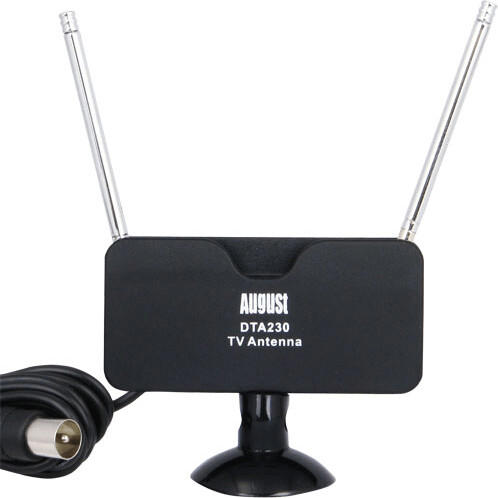

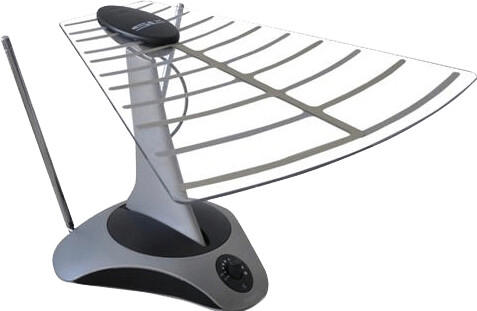
Flexibility (adjust to different positions)
This allows you to optimize reception by adjusting the aerial's orientation and position to receive signals from various directions. One great option that offers this flexibility is the August DTA240, which features an adjustable canister with a 180-degree swivel mechanism, allowing you to easily find the optimum angle for signal reception. Another notable choice is the One For All SV9323, which offers multi-positioning capabilities, enabling you to adjust the aerial's angle vertically and horizontally. These products excel in providing flexible positioning options, ensuring you achieve improved reception quality for your digital TV signals.
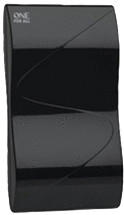
Multi-room usage
If you have multiple TVs or devices spread across different rooms in your home, you'll want to ensure a strong and reliable signal for each one. One excellent product that fits this criteria is the ANT-433 Tonal DVB-T/Wi-Fi TV Aerial. It is designed specifically for multi-room usage and provides a strong digital terrestrial television (DVB-T) signal that can be distributed to several TVs simultaneously. Its compact design features a low noise amplifier and high gain, ensuring exceptional quality signal reception throughout your home.
Another great option is the One For All SV9440 Full HD Amplified TV Aerial. This amplified aerial offers HD compatibility, making it ideal for multi-room setups. Additionally, it comes with a built-in 4G/LTE filter, which prevents interference from mobile phone signals. Boasting a wide reception angle of 360 degrees, this aerial ensures that all rooms receive a strong and clear signal without any disruptions or fluctuations. No matter which product you choose, consider the needs of your multi-room setup to find the best DVB-T aerial that will meet all your requirements.
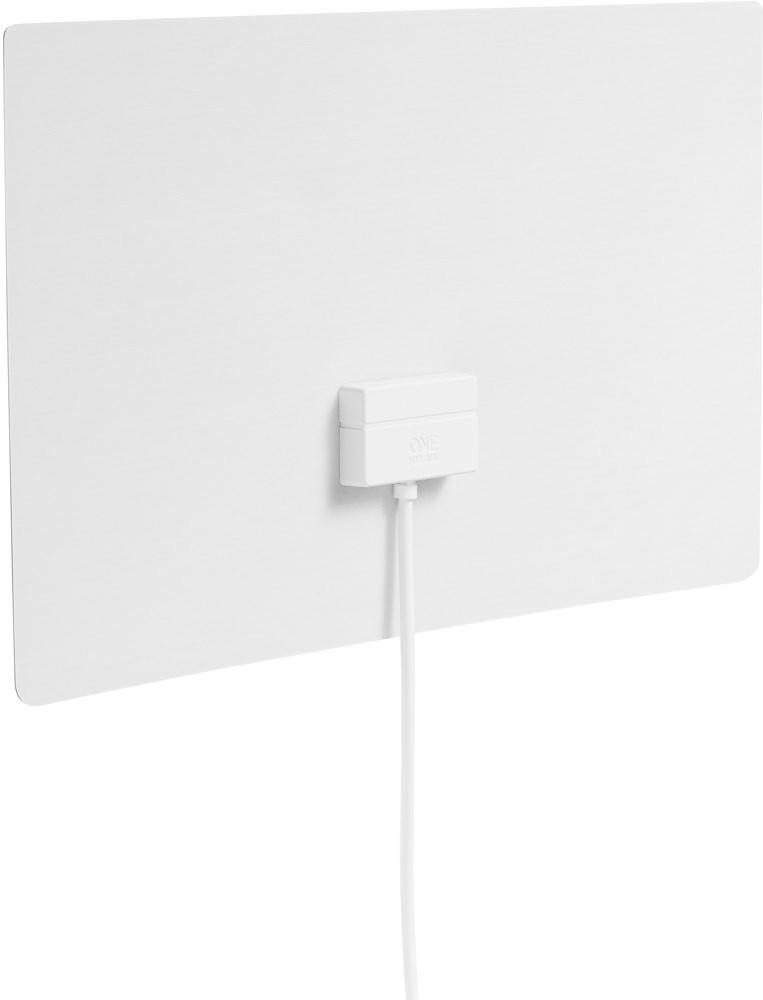
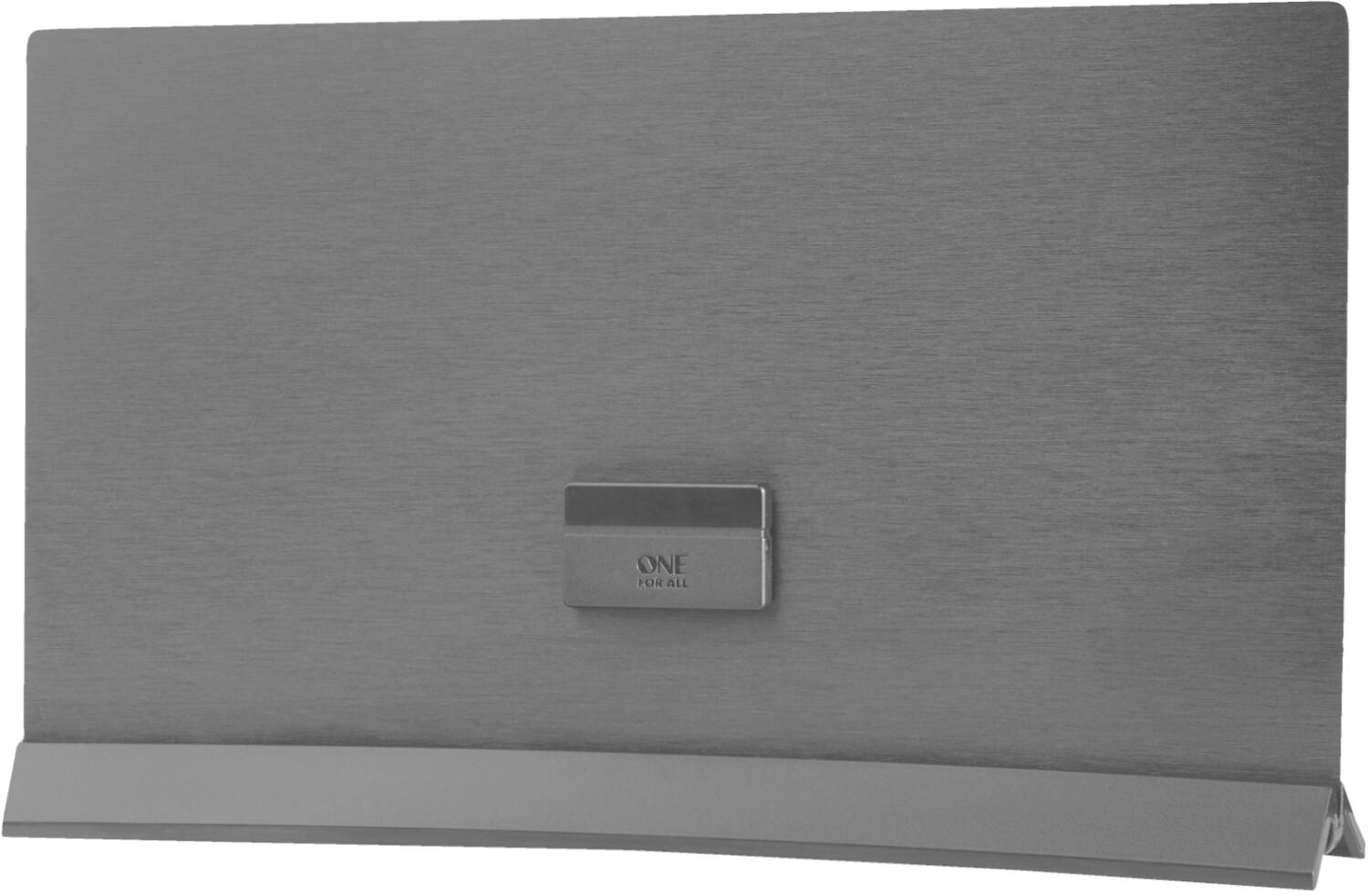
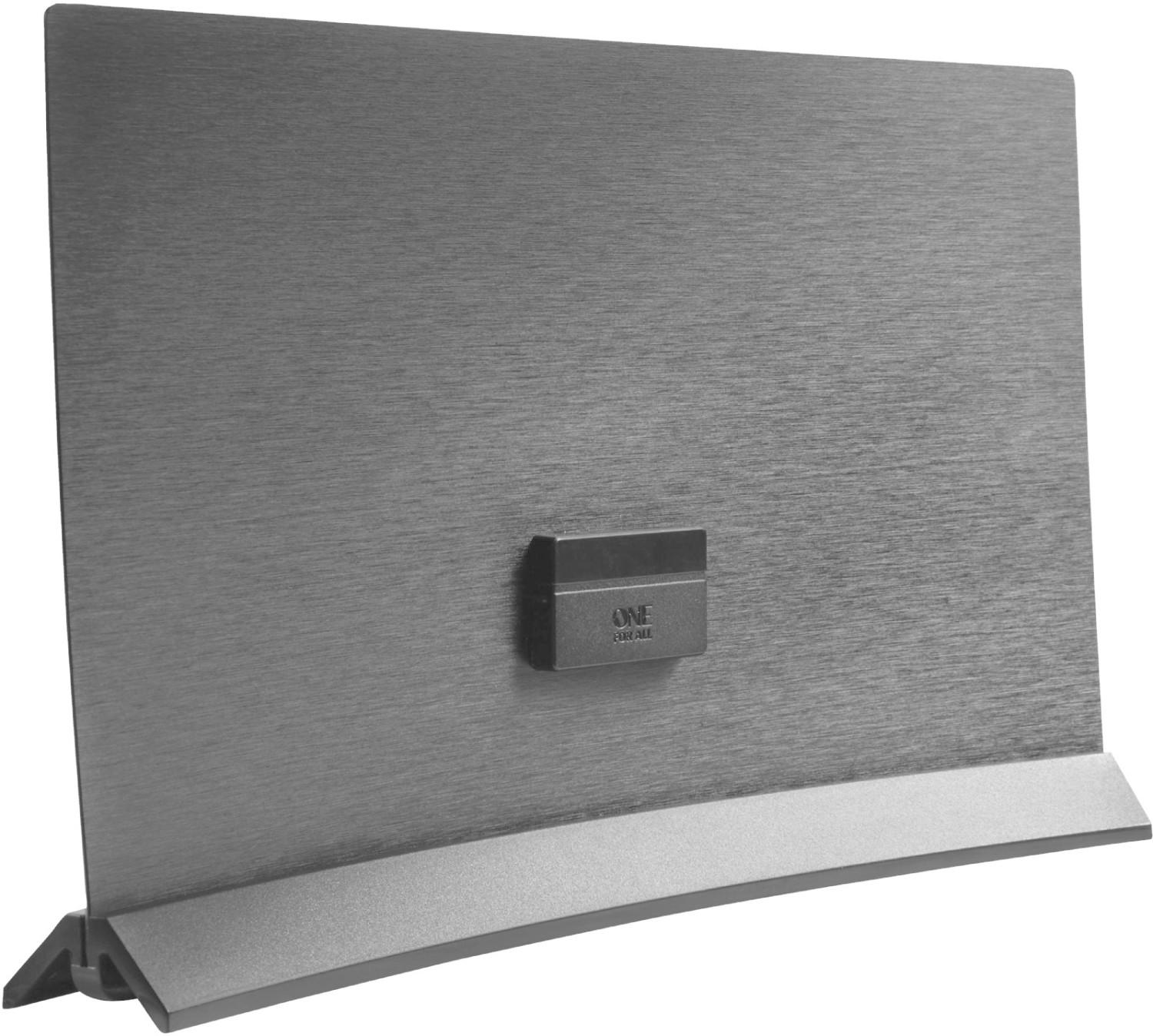
Broadcasting standard compatibility (DVB-T, DVB-T2, etc.)
The broadcasting standard determines the quality and range of channels you can receive, as well as the transmission technology used. DVB-T is the most commonly used standard for digital terrestrial broadcasting, while DVB-T2 is its successor, offering improved signal quality and more efficient transmission.
For individuals looking for a DVB-T compatible aerial, the 'Mohu Leaf 30 TV Antenna' is highly recommended. It supports the DVB-T standard and provides an impressive range of up to 30 miles. Meanwhile, those seeking a DVB-T2 aerial can opt for the '1byone TV Aerial', which boasts a range of up to 45 miles and supports the newer standard for unparalleled image and sound quality.
It's worth mentioning that there are various aerial options available on the market, each catering to different broadcasting standards and providing different ranges. However, the 'Mohu Leaf 30 TV Antenna' and '1byone TV Aerial' serve as excellent examples of quality products that align with specific broadcasting standards (DVB-T and DVB-T2) and offer impressive performance.
Price
The market offers a wide range of options with varying price tags, allowing consumers to select a product that fits their budget. One affordable yet high-quality option is the August DTA240 Digital TV Aerial, priced at around $20. It boasts excellent performance in rural or suburban areas and supports both HD and UHD television. Another option for those looking for budget-friendly aerials is the 1byone Amplified TV Antenna, available for approximately $25. This aerial offers a signal range of up to 200 miles and is equipped with a built-in amplifier to ensure optimal reception. For consumers seeking a mid-range product, the Leadstar 195 Digital TV Aerial is priced around $35 and supports 1080p and 4K resolution, making it a suitable choice for those looking for enhanced image quality.



Variety of brands
One trusted brand is August, which produces high-gain indoor aerials suitable for both digital and analogue TV signals. These aerials typically have features such as adjustable gain control and a high-quality amplifier, allowing users to receive stronger and clearer signals. On the downside, some users may find that these aerials require careful placement in order to achieve optimal reception.
Another reputable brand is Philex, known for its wide range of DVB-T aerials that cater to different reception needs. For instance, they offer amplified aerials for areas with weak signals as well as outdoor aerials that provide enhanced coverage. These aerials often come with 4G filters to reduce interference from nearby mobile signals, ensuring an uninterrupted viewing experience. However, some users may find the installation process for outdoor aerials a bit more challenging due to the need for mounting or aligning with a specific line of sight.
It's important to note that the availability of specific models may vary, but these examples provide a glimpse into the variety of brands and products you can consider when choosing a DVB-T aerial. Consequently, assessing your reception requirements and budget constraints can further help narrow down your options.